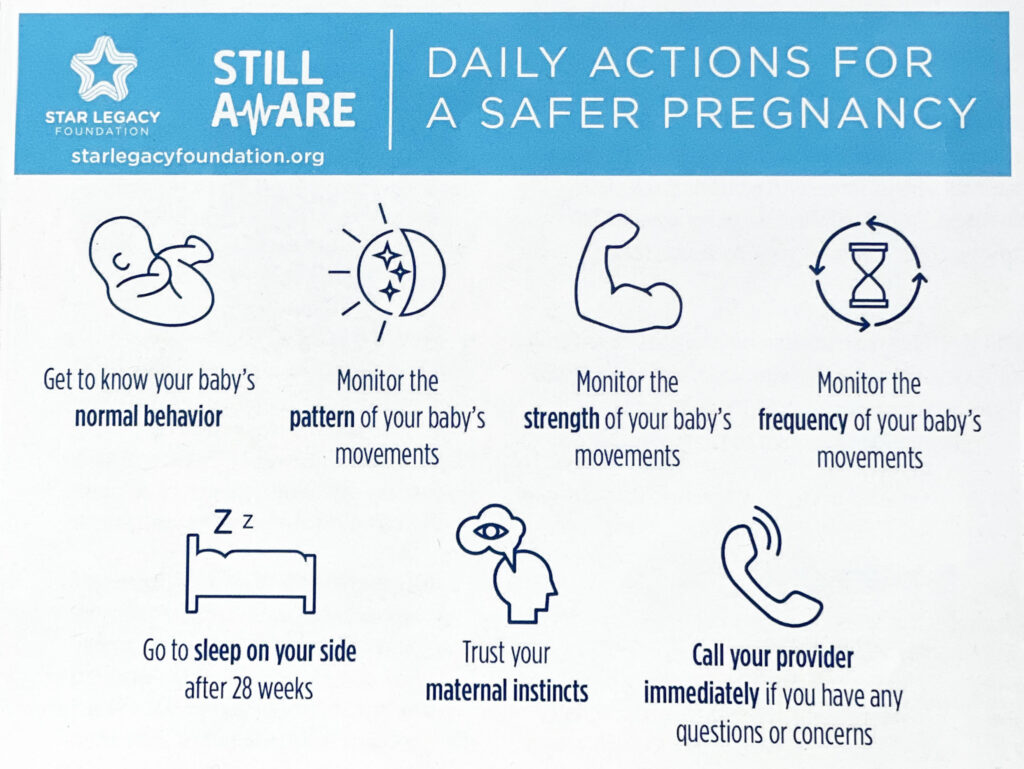Myths about Fetal Movement Counting
Counting your baby’s movements in pregnancy is important and worth doing. But education about how to do it right is not widely available. In this post we will discuss myths about fetal movement counting.
Myth 1: Kick counts reassure. The standard advice given to pregnant women is to check in on your baby and call if there are less than 10 kicks per hour. This is not bad advice but research shows that while most moms will pass that test there is no data on which percentage can perceive decrease movement and still pass. For example, if you normally feel 50 movements in an hour, sensing only 10 represents a significant drop. So if you are worried about a concerning change in fetal movement, please give us a call.
Myth 2: Fetuses slow down at the end of pregnancy. A 2019 study looking at fetal movement showed that fetal movement does not decrease in frequency or strength at the end of pregnancy. It found that only 6% of patients noticed decreased fetal strength and 14% noticed decreased frequency of movements at term. Furthermore, 59% noticed an increase in strength and 39% noticed an increase in frequency of movements.
Myth 3: Patients should try juice, ice water or food before evaluation. Common advice when patients notice a decrease in movement is to recommend having a sweet cold drink before calling to report a potential problem. Studies about this have not shown improved reactivity when testing is done. When a patient calls with decreased fetal movement, advice should be to come and be evaluated, not have cold liquids or a sugary meal, as it is not supported by research.
Myth 4: An increase in fetal movement is not of concern. An increase of fetal movement can sometimes occur before a stillbirth. A single episode of excessively vigorous activity which is often described as frantic or crazy is associated with an odds ratio for stillbirth of 4.3. In a study, 30% of cases reported it, compared with only 7% of controls (BMC Pregnancy Childb 2012 10.1186/1471). In our practice, we manage mothers who call with this concern the same way as a report of decreased fetal activity, and bring in the mom for immediate evaluation.
Myth 5: Patients all know that a concerning change in fetal activity is a risk factor for stillbirth. Decreased fetal movement has been associated with an increased risk of stillbirth. However patients often do not know about this. OB physicians are sometimes reluctant to discuss this issue due to fear of anxiety it can provoke. Most patients are very appreciative of receiving this information and feel reassured that help is available if needed.
Conclusion: When I think about the patients I cared for who have had a stillborn baby, I recall that they often come in for evaluation of a different complaint, such as a labor check or a routine prenatal visit. When asked about it, they will sometimes say they last felt fetal movement several days before. This does not need to happen. Protocols have shown that when patients have received education about fetal activity, they will call sooner to report a potential problem. Not all stillbirths can be prevented, but being more aware of changes in your baby’s activity can be successful at minimizing your risk.

